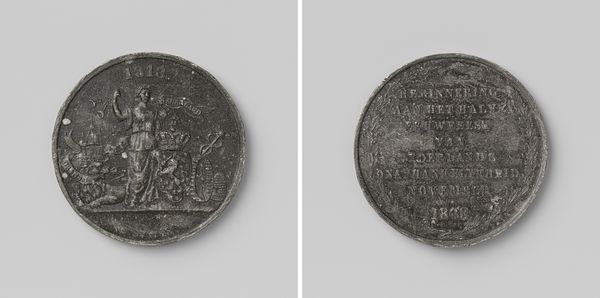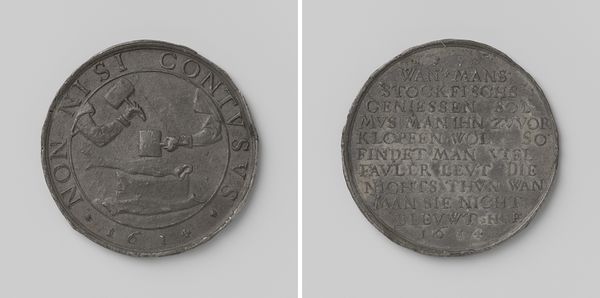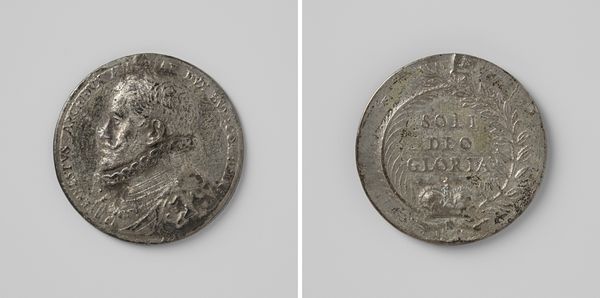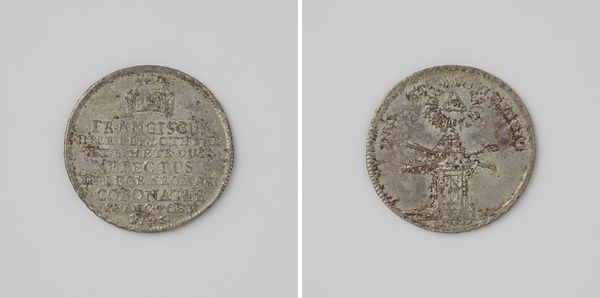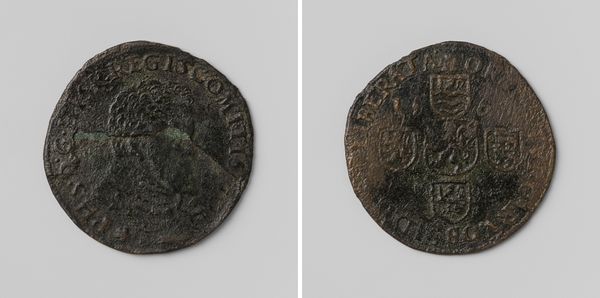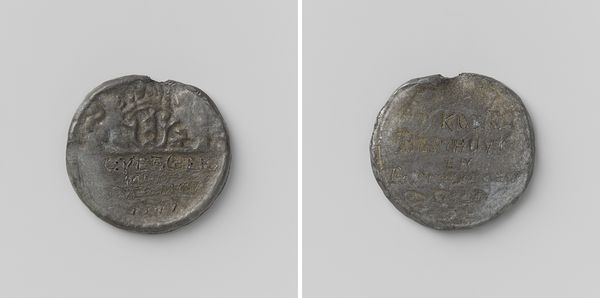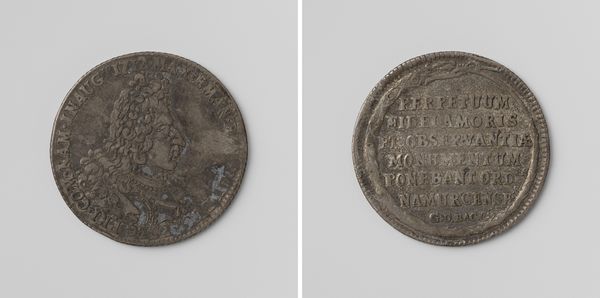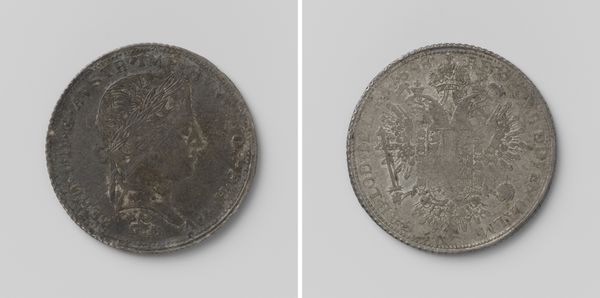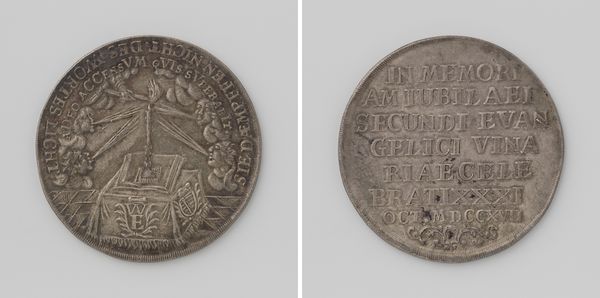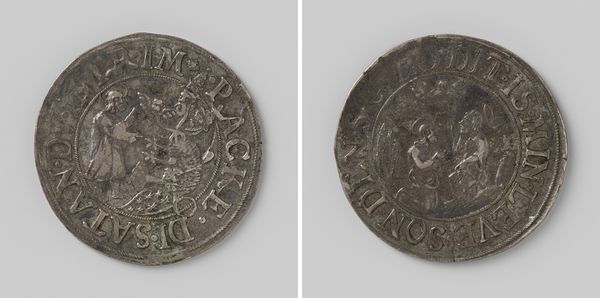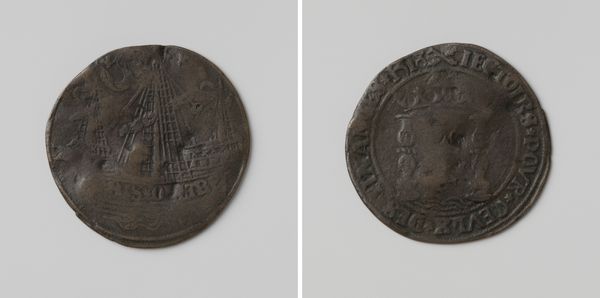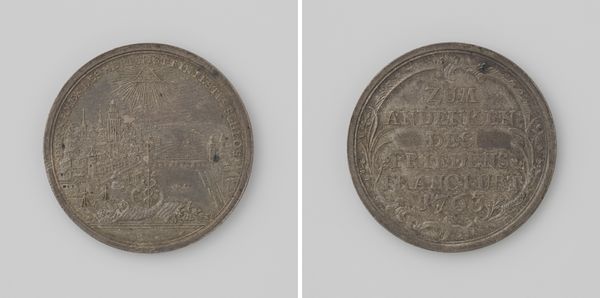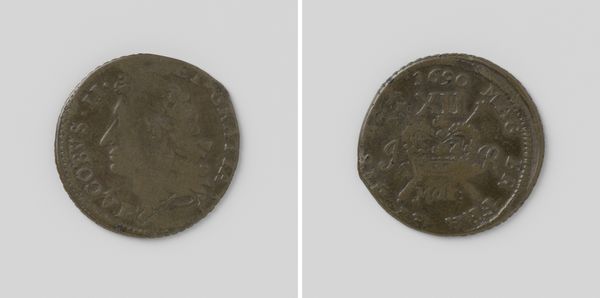
Dood van prinses Louise Henriette van Oranje, gemalin van Frederik Willem, keurvorst van Brandenburg 1667
0:00
0:00
metal, relief, sculpture, engraving
#
portrait
#
medieval
#
metal
#
sculpture
#
relief
#
sculpture
#
history-painting
#
engraving
Dimensions: diameter 2.6 cm, weight 3.61 gr
Copyright: Rijks Museum: Open Domain
Editor: Here we have a metal relief from 1667 by Johann Liebmann, titled "Death of Princess Louise Henriette of Orange, Wife of Frederick William, Elector of Brandenburg." It looks like a coin or medallion of some sort. The text and the imagery look very formal. How do you interpret this work? Curator: This piece offers a poignant glimpse into the construction of power and memory in the 17th century. Metal reliefs like these served as both commemorative objects and potent political tools. Consider the princess not merely as an individual, but as a symbol: a Dutch princess married into the Hohenzollern dynasty, vital for Brandenburg-Prussia's geopolitical standing. Editor: So, the medallion wasn’t just about mourning a death? Curator: Exactly. Death, particularly of a royal, was never simply a private affair. It was a carefully orchestrated event used to reinforce the legitimacy and continuity of the ruling house. The text is obviously important but it may be useful to ask, "Who commissioned this work, and for what purpose?" Who gets to control the narrative and shape collective memory, and why? Editor: It's interesting to consider the political message over the artistic quality. What else stands out? Curator: Look at the use of symbolism, perhaps on the other side of the medallion. Every emblem would have been understood by its contemporary audience to signal particular virtues, alliances, or claims to power. Even the material – metal – speaks to permanence and enduring legacy. What does the choice of metal convey in terms of status, privilege and perhaps something else? Editor: It really brings into focus the layers of meaning behind what initially seemed like a simple commemorative object. Curator: Absolutely. Analyzing the historical context and political motivations helps us decode the narratives embedded within this relief, revealing its complex role in shaping historical memory.
Comments
No comments
Be the first to comment and join the conversation on the ultimate creative platform.
